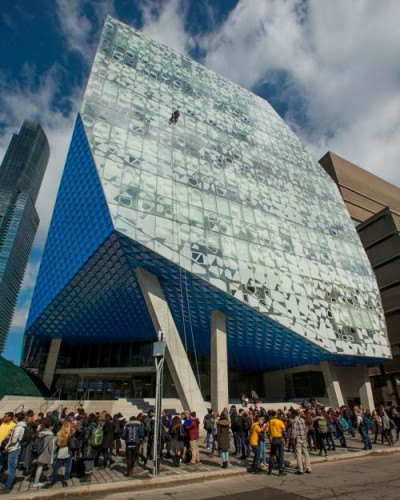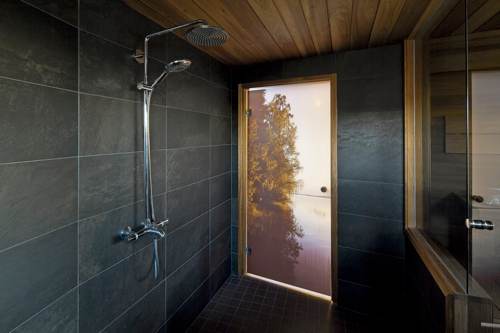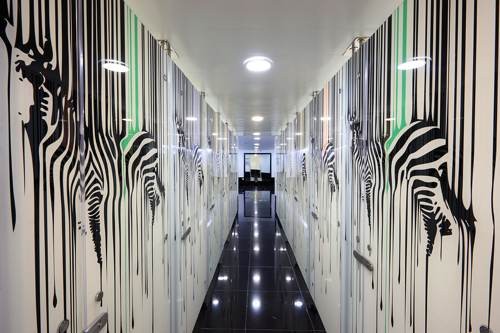Printed Glass A Technicolor Take On Architecture
BY LAURA GOLDSTEIN
Special to The Globe and Mail

In Moscow, a lush 3-D forest of dense green trees stretches up to the rooftop and encircles the AFIMall, a new retail and entertainment complex.
In Paris, folded, faux-marbleized pages jut out across the exterior of Barclays Bank like gigantic cut-out origami fans. Both effects were created through digital printing on their glass facades.
From airport and subway murals to hotel lobbies and restaurants, the sky’s the limit as high-tech printed glass makes its mark around the world.
The pioneer behind “digital ceramic in-glass printing” is an Israeli company called Dip-Tech. The firm’s creation of ceramic inks in a rainbow of colours to apply imagery, patterns or text to the surface of flat glass has revolutionized the industry.
It sells its patented system of image-processing software, ceramic inks and digital printers to glass fabricators working with architects around the world. Interior applications include kitchen backsplashes, shower doors, wall art and even flooring.
With headquarters outside Tel Aviv, Dip-Tech’s CEO, Yariv Matzliach, saw a niche in 2005 when he noticed that traditional printing on glass (which uses screening plates that limit colours and is much slower) exhibited poor durability over time. Initially, the technology only printed with black ceramic ink and was mainly used in the transportation industry. “We have patented our technology with the Hebrew University of Jerusalem to develop ceramic inks that, when tempered after printing, are fused into the glass, making it scratchproof, fade– and weather-resistant as well as environmentally friendly,” explains Matzliach.

“It supports multiple sustainable functions like optimizing solar energy, screening out harmful UV rays, reducing glare and even decreasing amounts of air conditioning needed in a building internally. It is also recyclable like ordinary glass.”
Ryerson Learning Centre, Toronto: The spectacular graphic design, like a flurry of geometric snowflakes or petals, was created by Snohetta , NY, then printed on glass in high-definition by Prelco, Toronto, using Dip-Tech’s technology. “Opacity and translucence can be precisely manipulated when digitally printed on glass, so we could adjust what kinds of light students would need on different floors,” says Mike Smith, associate at Zeidler Partnership Architects in Toronto, who collaborated on the project. The building was erected on the iconic Sam the Record Man site, transforming the intersections of Gould and Yonge Streets.
Bring the outside in and never have to leave your shower: A couple in Finland wanted the photographs of their summer home reproduced on their shower door and kitchen backsplash. RAKLA, a Finnish glass-processing company, used their Dip-Tech Digital Ceramic In-Glass Printer to print the photorealistic images directly onto the glass.

A public washroom worth standing in line for: The zebra graphic borders on optical illusion for glass doors in a public washroom at Sharonim Mall in Hod Hasharon, Israel. Printed by Spiral using Dip-Tech digital technology.
The technology also promises to save some of the estimated 100-million birds killed in North America alone every year when they fly into reflective glass. Dip-Tech’s technology makes buildings more bird-friendly by adding decorative depth perception to designs in glass.
